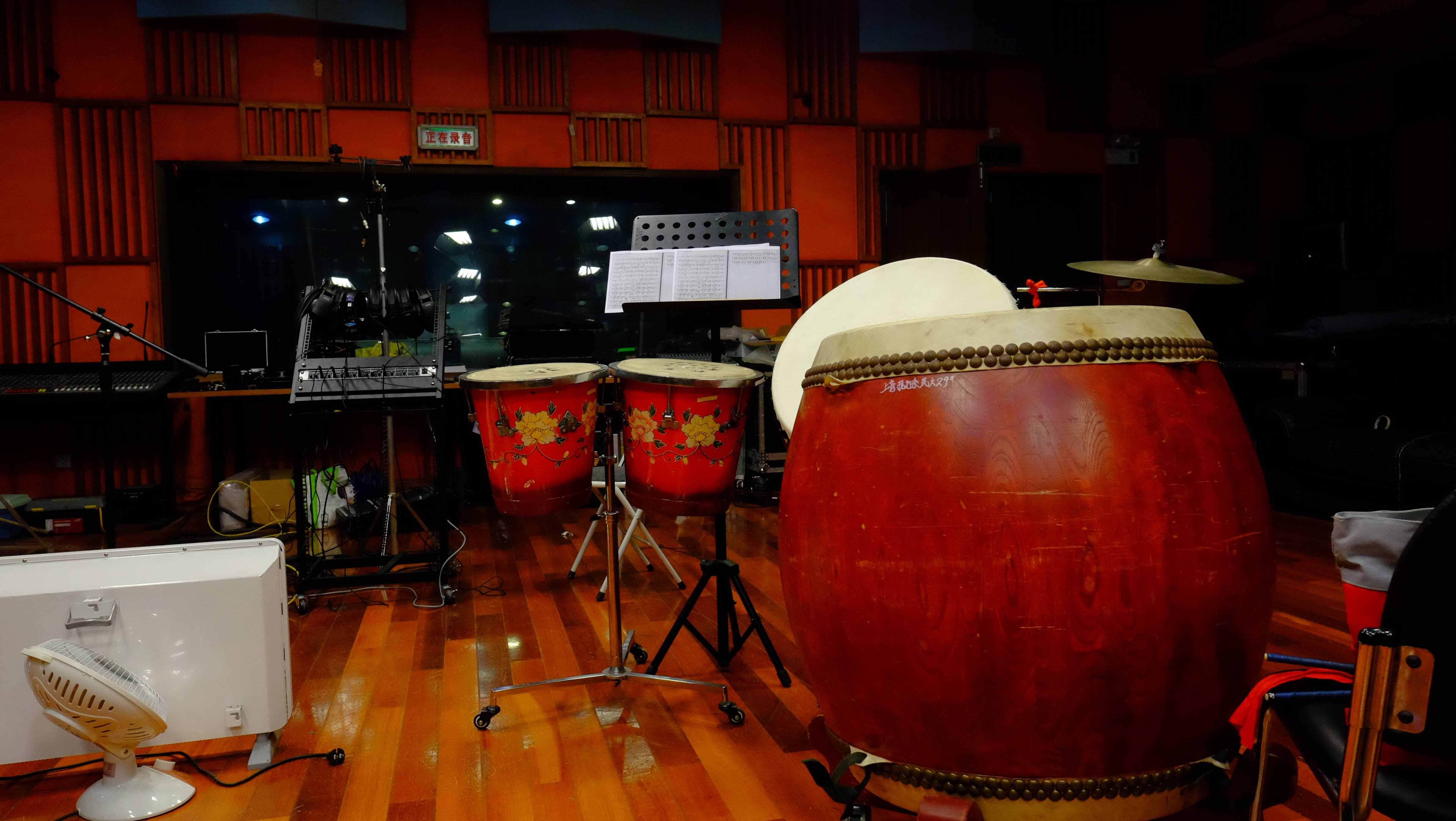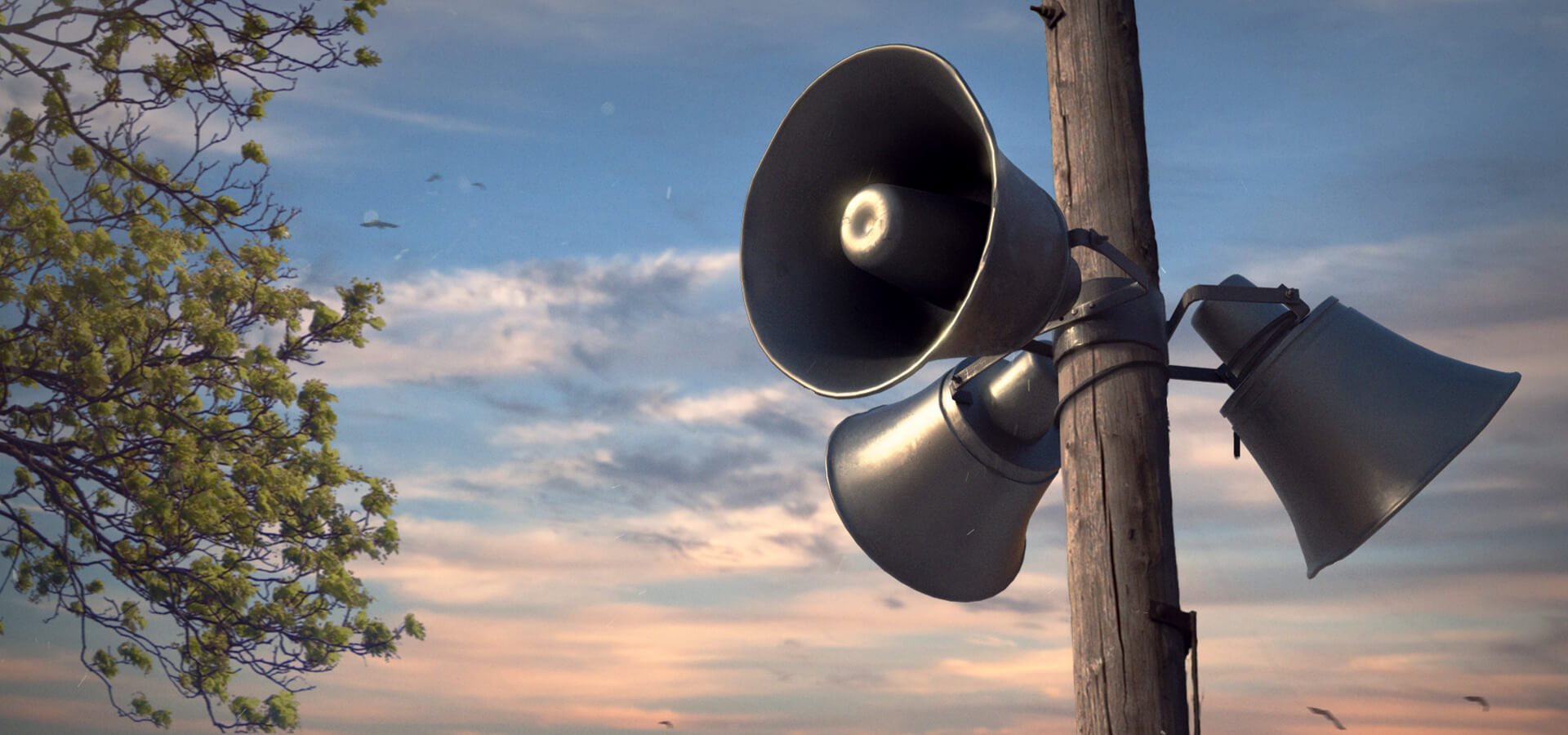Over the last few weeks, we’ve detailed how graphics are going to be updated and maps are receiving a HD overhaul; now it’s the turn of the new soundtrack. After all, in the midst of battle, it’s not only the visual details that matter, you need to be aurally immersed too.
New Tanking Music
With the new soundtrack, all maps will have their own signature sound. Composed by Andrius Klimka and Andrey Kulik, these 60+ unique pieces of music all come together to form the new soundtrack. Each map has original music for the beginning, duration and culmination of the battle, as well as its own loading screen tune—an introductory musical accompaniment driving through the atmosphere and mood of the map.
Thanks to the dedication of our audio team and composers, each battle will really take you to the in-game locale and add the greatest aural fidelity we possibly could!
When setting about to write each new piece of music, the audio team carefully studied map history and locale. The guys met with historians and level designers—to uncover details of each map which might be missed at first glance. These meetings helped to determine the ethnic and geographical location.
.jpg)
Inspiration
With the ethnic and geographic locations understood, next came the work stage: the composers needed to decide on a set of basic instruments and melodies to use in the composition of each piece, for example:
- Cliff with its Greek setting is getting a rich variety of local folk motifs and instruments
- Airfield, El Halluf and Sand River feature a very diverse Arabic sound
- Mountain Pass received very distinctive vocal tunes and the inclusion of Caucasian folklore

Local Aesthetics
To give the greatest possible aural fidelity, unique instruments were selected which were recorded by musicians all across the globe. But it involved more than instruments… Vocal tunes were recorded as a way of trying to capture the characteristics of the people local to the map’s region. In some cases, well-known melodies were used due to being synonymous with a certain country or locale. Westfield, Fjords, Malinovka, Paris and many more are examples of this.
Then came the hard part; it was all about mixing these sounds together to get one single composition which fit the map.
Musical Geography
There are certain sounds and compositions that are just synonymous with a particular country or region. Utilising this can instantly transport a listener from one side of the globe to another and this thinking was a major part of the new soundtrack. The introductory composition, unique to each map, plunges us into a small, localized world with its own history and mood and for us, this might only be a fleeting moment, but it will remain with its history no matter what.
RUINBERG: The sounds of the classical music against the backdrop of burning ruins on Ruinberg might be extremely familiar to some of you. That’s because it uses Toccata and Fugue in D minor by the great German composer, Johann Sebastian Bach.
MINES: When taking to Mines, you can hear Balkan folklore motifs and the composition portrays a moment of calm in the small village surrounded by mountains. This is soon interrupted by the exciting tone showing that the battle still rages on and the fight is about to begin.
MOUNTAIN PASS: Nestled in the middle of the stunning Caucasus mountains, a peaceful moment introduces the player to the map. A Caucasian soldier sings about missing his family, his house. But then shots are heard: somewhere in the mountains a battle has started and he must join it. He must go into battle; he has to fight for his country.
KARELIA: Church bells and old Slavic epics were the basis of Karelia’s composition. The poetic syllable of these epics are transmitted in the rhythm with classical instruments and vocals.
EL HALLUF, SAND RIVER AND AIRFIELD: The musical composition is based on the ethnic music of the Berbers. Arabic music is actually very different for the Middle East and North Africa. And since the battles of the Second World War are mainly connected with North Africa, the composition utilizes the folklore of those living there.
No Battle the Same
In addition to the introductory, loading screen tune, the game plays certain music during different parts of the battle based off the current circumstances you and your team find yourselves in.
Close to the end of the battle, each team has a different melody depending on the current outcome of the battle. If you’re winning or close to securing a win, a victorious tone will play to spur you on. If the tide of the battle looks ominous then a more somber tune is played to encourage you and your teammates to take out the enemy and secure the victory.
Combat music never repeats itself thanks to the efforts of our hard-working audio team who composed instrumental parts for each sound block. These sound blocks are randomly arranged in sequences, while the soundtracks in each block further adds to its aural authenticity. After all, each battle is different so why should the music be the same?
Still not taken part in the Beta? Why not join now and take in the stunning soundtrack and HD visuals!
Nelle ultime settimane vi abbiamo spiegato nel dettaglio come sarà aggiornata la grafica e le caratteristiche delle mappe che sono state rinnovate in HD; ora è la volta della nuova colonna sonora. Dopo tutto, durante le battaglie, non conta solo la grafica, ma anche l’audio deve risultare coinvolgente.
Nuova musica da carristi
Con la nuova colonna sonora, ogni mappa ha un accompagnamento che la caratterizza. Composti da Andrius Klimka e Andrey Kulik, questi 60 e più brani musicali formano la nuova colonna sonora. Ogni mappa ha musiche diverse per l’inizio, per lo svolgimento e per l’apice della battaglia, oltre a una melodia per la schermata di caricamento, un accompagnamento musicale introduttivo che permette di immergersi nell’atmosfera della mappa.
Grazie all’impegno dei compositori e della nostra squadra di tecnici audio, ogni scontro vi farà sentire davvero sul campo di battaglia, con la massima fedeltà audio possibile!
Prima di iniziare a scrivere un brano, la squadra audio ha attentamente studiato la storia della mappa e le tradizioni locali. I ragazzi si sono incontrati con gli storici e con i level designer per scoprire dettagli che potevano essere loro sfuggiti. Questi incontri li hanno aiutati a determinare le caratteristiche etniche e il posizionamento geografico.
.jpg)
Ispirazione
Determinate le caratteristiche etniche e il posizionamento geografico, si sono messi al lavoro: i compositori dovevano decidere il set di strumenti e le melodie da usare per la composizione di ogni brano, ad esempio:
- Scogliere, ambientata in Grecia, è contraddistinta da una ricca varietà di melodie e strumenti tradizionali
- Campo di Volo, El Halluf e Dune di Sabbia si distinguono per i suoni d’ispirazione araba
- Passo di Montagna ha ricevuto melodie vocali molto particolari e si è tratta ispirazione dal folklore caucasico

Estetica locale
Per conferire la massima fedeltà possibile, sono stati selezionati degli strumenti registrati da musicisti di tutto il mondo. Ma non ci siamo limitati ai soli strumenti… anche i brani vocali sono stati registrati in modo tale da catturare le caratteristiche distintive delle popolazioni di ogni singola regione. In alcuni casi, sono state utilizzate melodie famose in quanto sinonimo di certi paesi o località. Westfield, Fiordi, Malinovka, Parigi o molte altre sono dei classici esempi.
Poi è arrivata la parte difficile: abbiamo dovuto riunire questi suoni per ottenere una singola composizione adatta ad ogni mappa.
Geografia musicale
Ci sono alcuni suoni o composizioni che sono sinonimo di particolari paesi o regioni. Sfruttandoli è possibile teletrasportare istantaneamente l’ascoltatore da un lato all’altro del globo e questo pensiero ha svolto una parte importante nella realizzazione della nuova colonna sonora. Le composizioni introduttive, uniche per ogni mappa, ci catapultano in un piccolo mondo dotato di una storia e di uno stato d’animo personali. Non si tratta di momenti fugaci, ma di qualcosa che rimarrà per sempre segnato nella storia.
RUINBERG: Per alcuni di voi la musica classica e le rovine in fiamme di Ruinberg non saranno una cosa nuova. Questo perché viene impiegata la Toccata e Fuga in Re minore del grande compositore tedesco Johann Sebastian Bach.
MINIERE: Arrivando alle Miniere è possibile sentire dei motivi folkloristici dei Balcani, con una composizione che ritrae un momento di calma e tranquillità nel piccolo villaggio circondato dalle montagne. Questo verrà però ben presto interrotto da un tono agitato che ci ricorda la guerra che infuria e che lo scontro sta per iniziare.
PASSO DI MONTAGNA: Immerso nel cuore delle splendide montagne del Caucaso, un momento di pace introduce il giocatore nella mappa. La canzone di un soldato del luogo narra di come ha perso la sua famiglia e la sua casa. Poi si sentono degli spari: da qualche parte nelle montagne è iniziata una battaglia e anche lui deve andare a combattere. Deve andare a combattere per la sua patria.
KARELIA: Campane di chiesa e antichi ritmi epici slavi sono alla base di questa composizione. La sillabazione poetica di questi suoni epici viene trasmessa dal ritmo degli strumenti classici e dai canti.
EL HALLUF, DUNE DI SABBIA E CAMPO DI VOLO: Le loro composizioni musicali si basano sulla musica etnica berbera. In realtà, la musica araba è molto differente da quella del Medio Oriente e del Nord Africa. Dal momento che le battaglie della Seconda Guerra Mondiale erano maggiormente connesse al Nord Africa, queste composizioni impiegano il folklore della popolazione del luogo.
Nessuna battaglia è uguale
In aggiunta all’introduzione, il tema della schermata di caricamento, il gioco riprodurrà determinati pezzi in varie parti della battaglia in base alle circostanze attuali in cui il giocatore si troverà.
Verso la fine della battaglia, ogni squadra ha melodie differenti in base al risultato della battaglia. Se si sta vincendo o si è prossimi a farlo, verrà riprodotto un pezzo con una tonalità che trasmetta un senso di vittoria. Se il corso degli eventi sembra volgere al peggio, allora ci sarà un tono più severo per incoraggiare tutta la squadra a eliminare il nemico e raggiungere la vittoria.
La musica della battaglia non si ripete mai grazie all’impegno profuso dalla nostra squadra audio, che ha composto parti strumentali per ogni blocco sonoro. Questi blocchi sono arrangiati casualmente in sequenze, mentre la colonna sonora di ogni blocco rinforza la sua fedeltà uditiva. Dopo tutto, ogni battaglia è differente, quindi perché la musica dovrebbe essere la stessa?
Non state ancora partecipando alla Beta? Perché non farlo ora ascoltando la sbalorditiva colonna sonora e ammirando la grafica in alta definizione!
